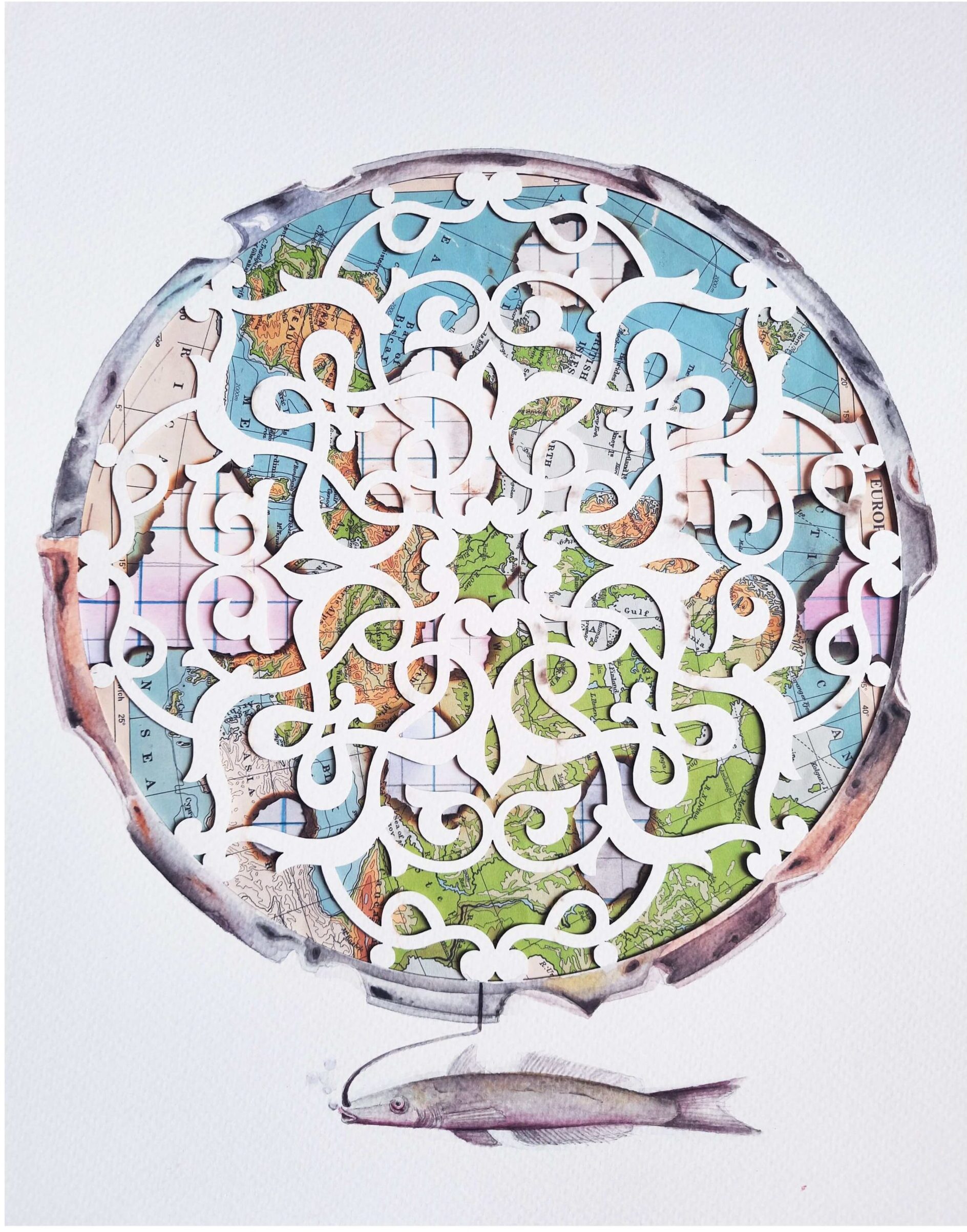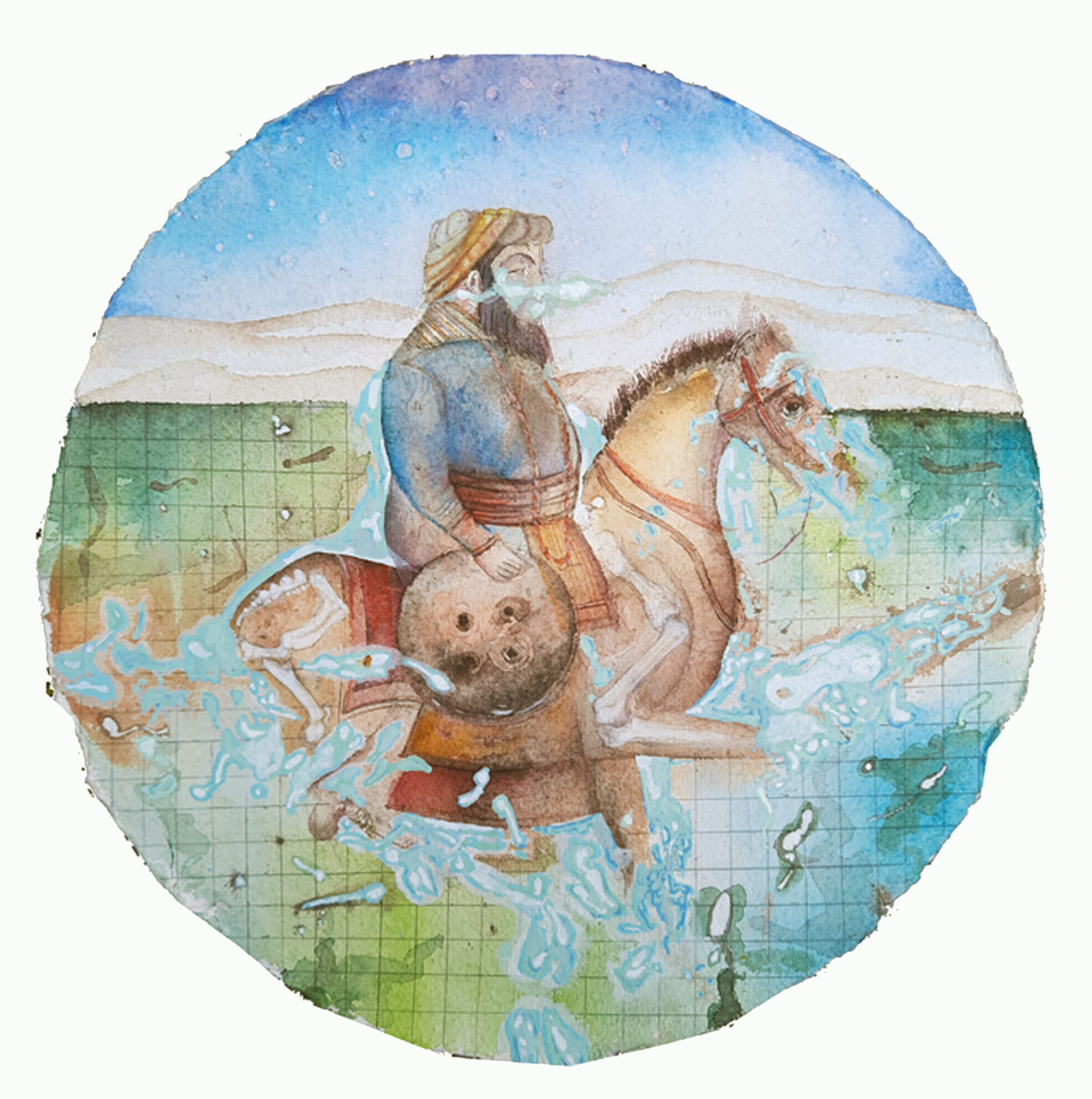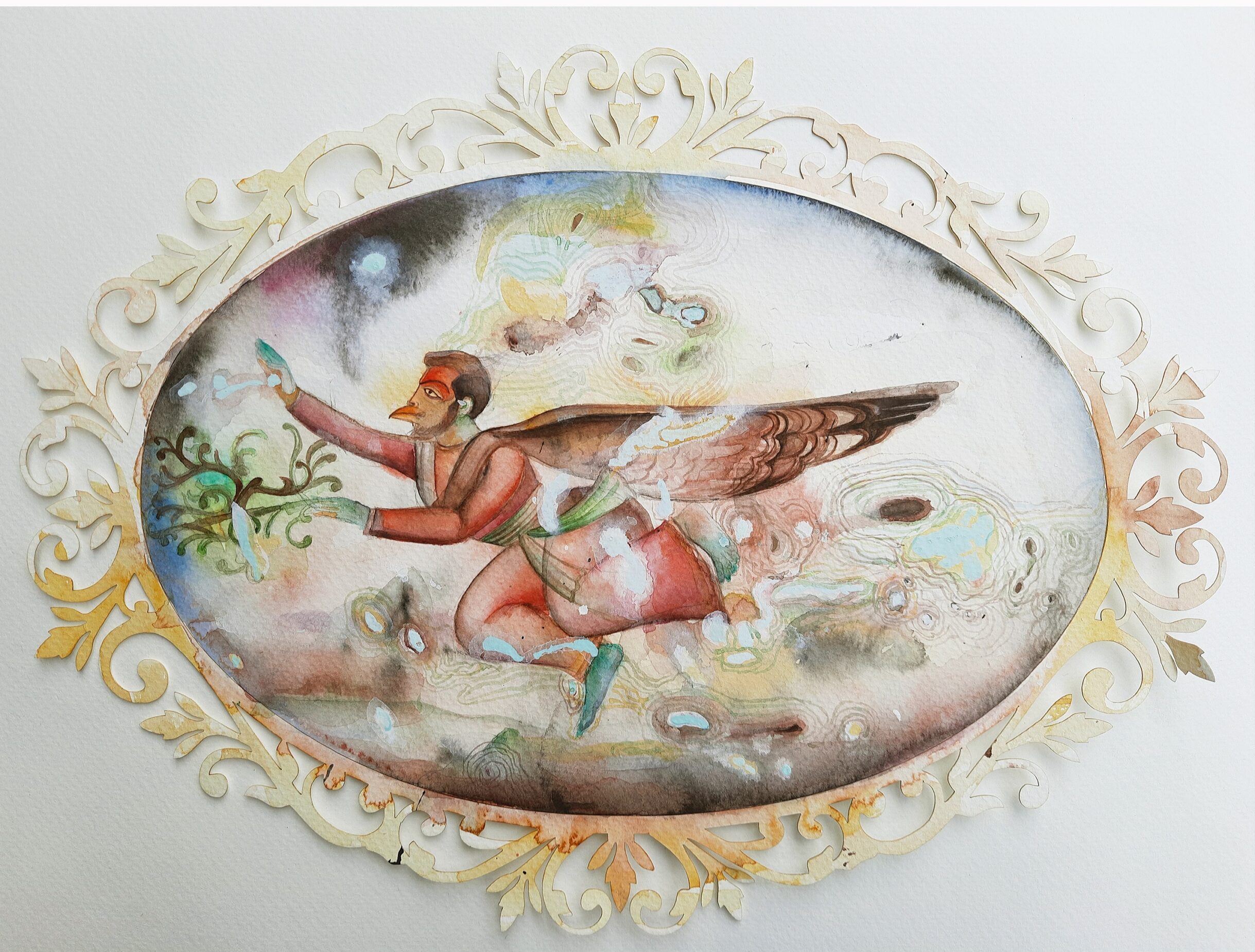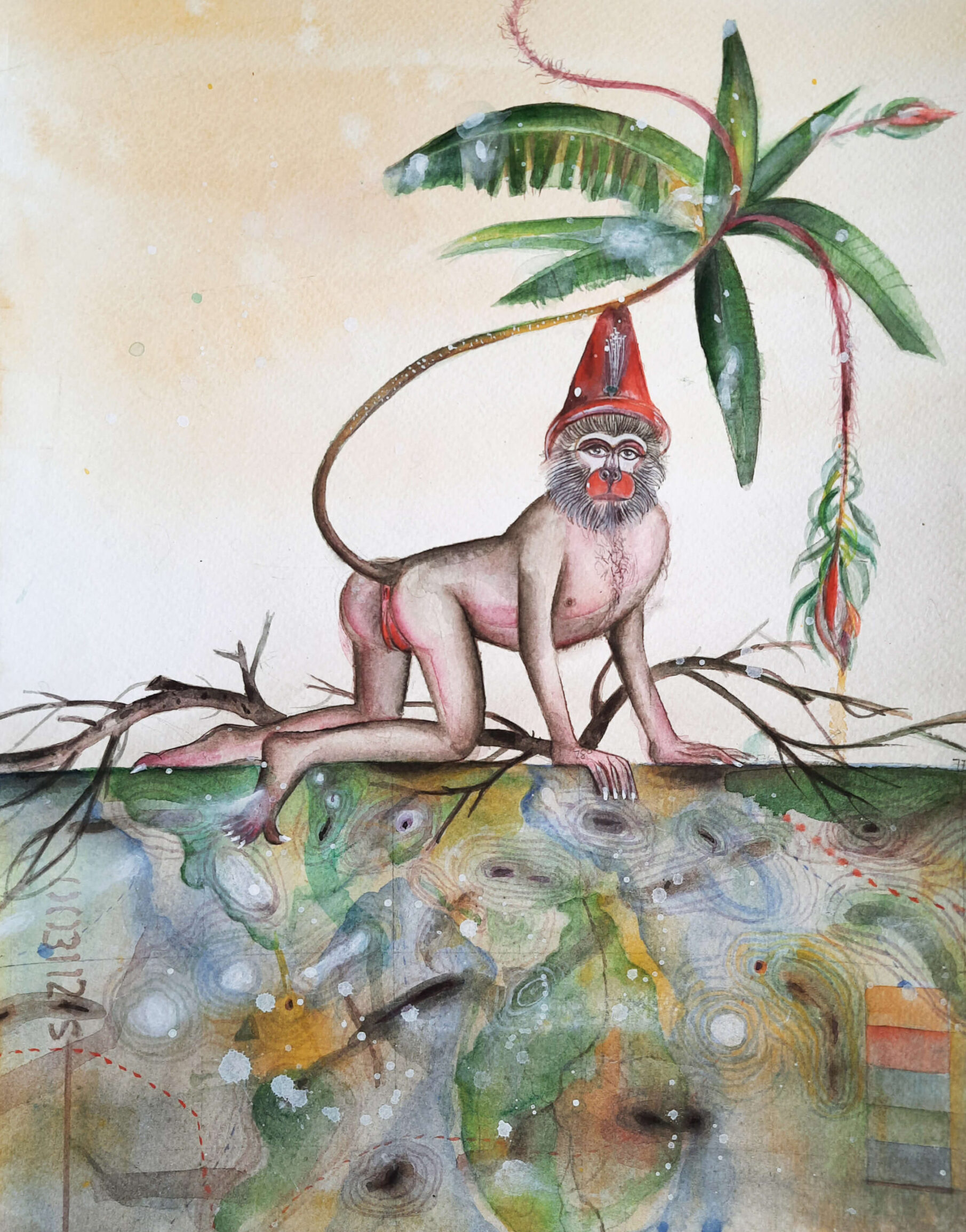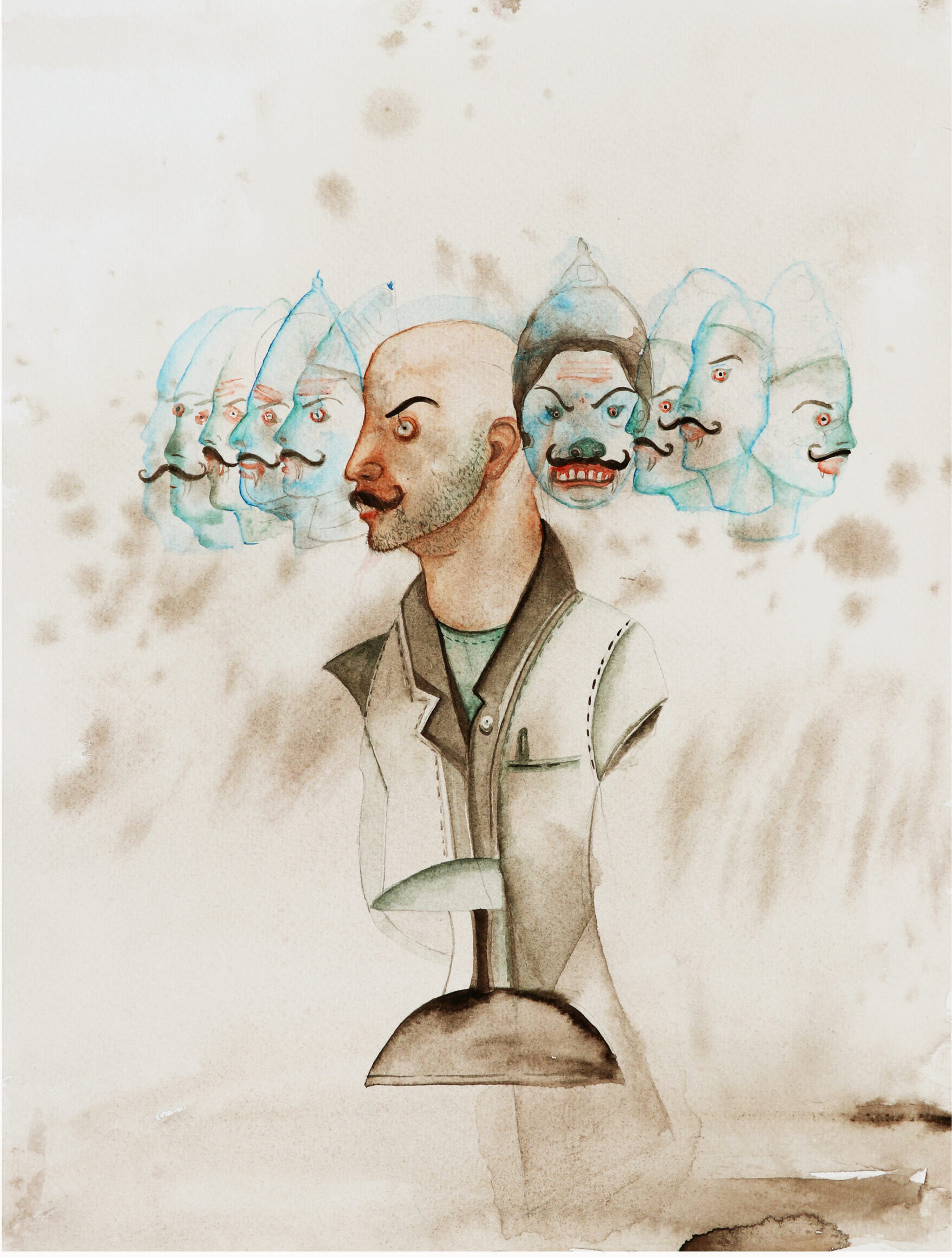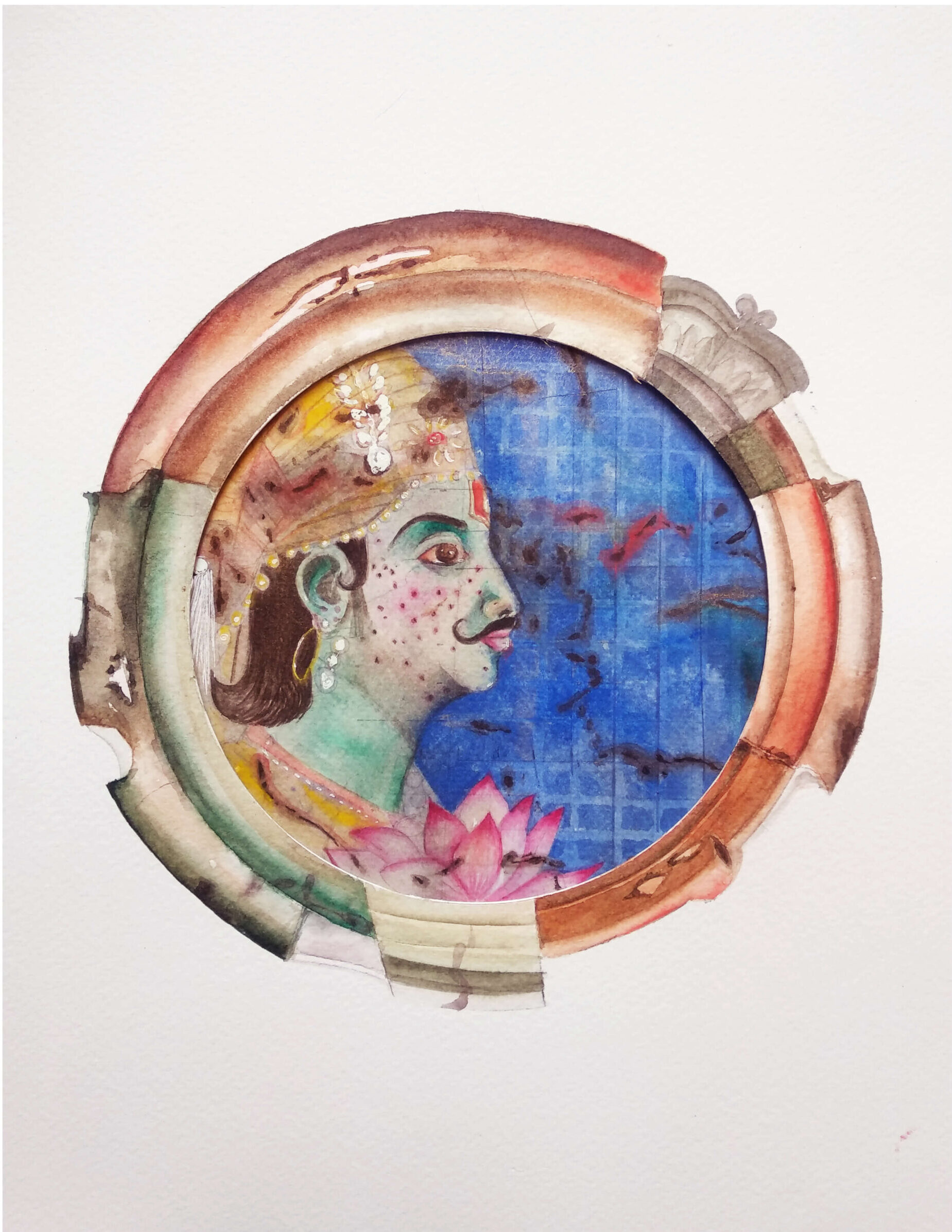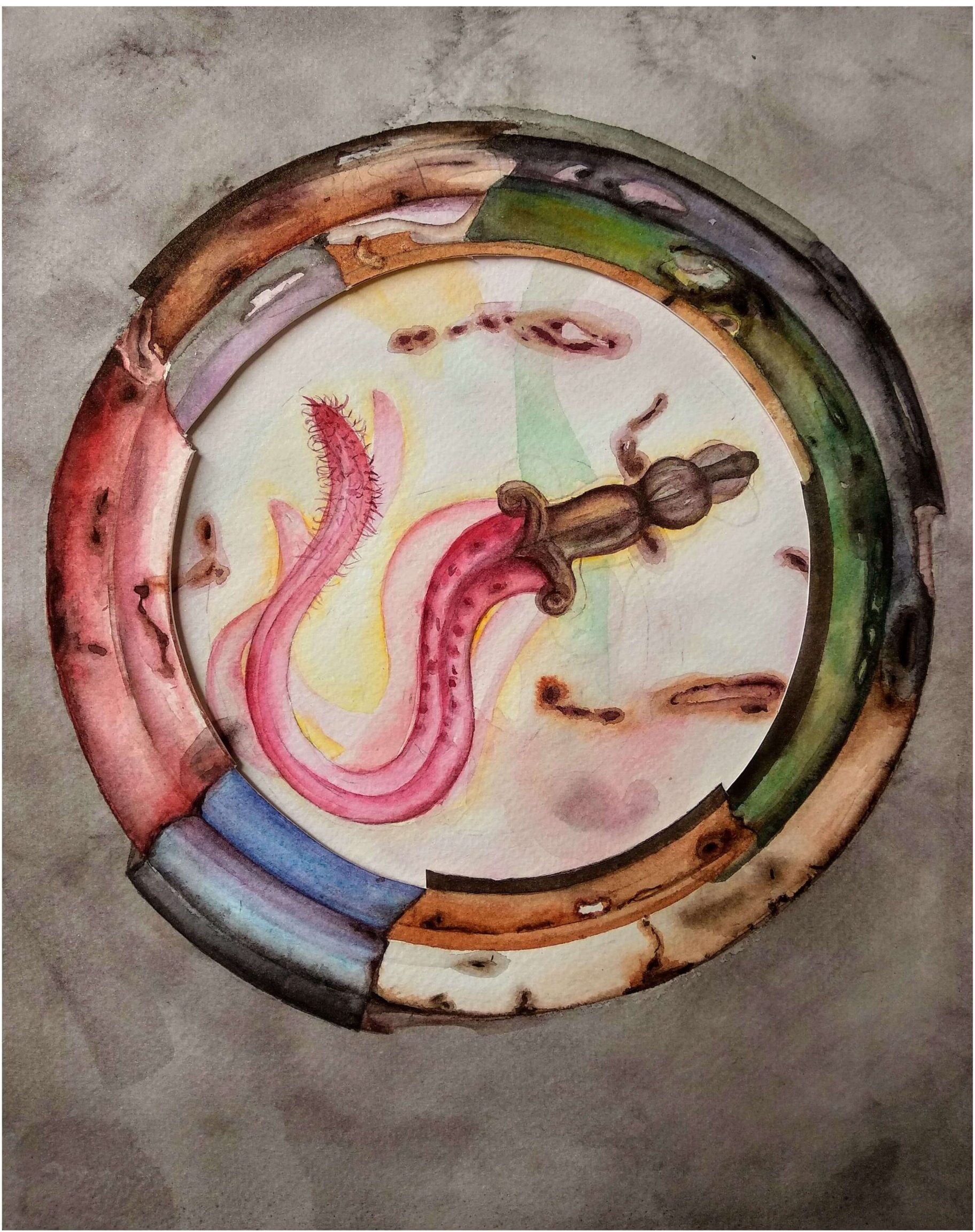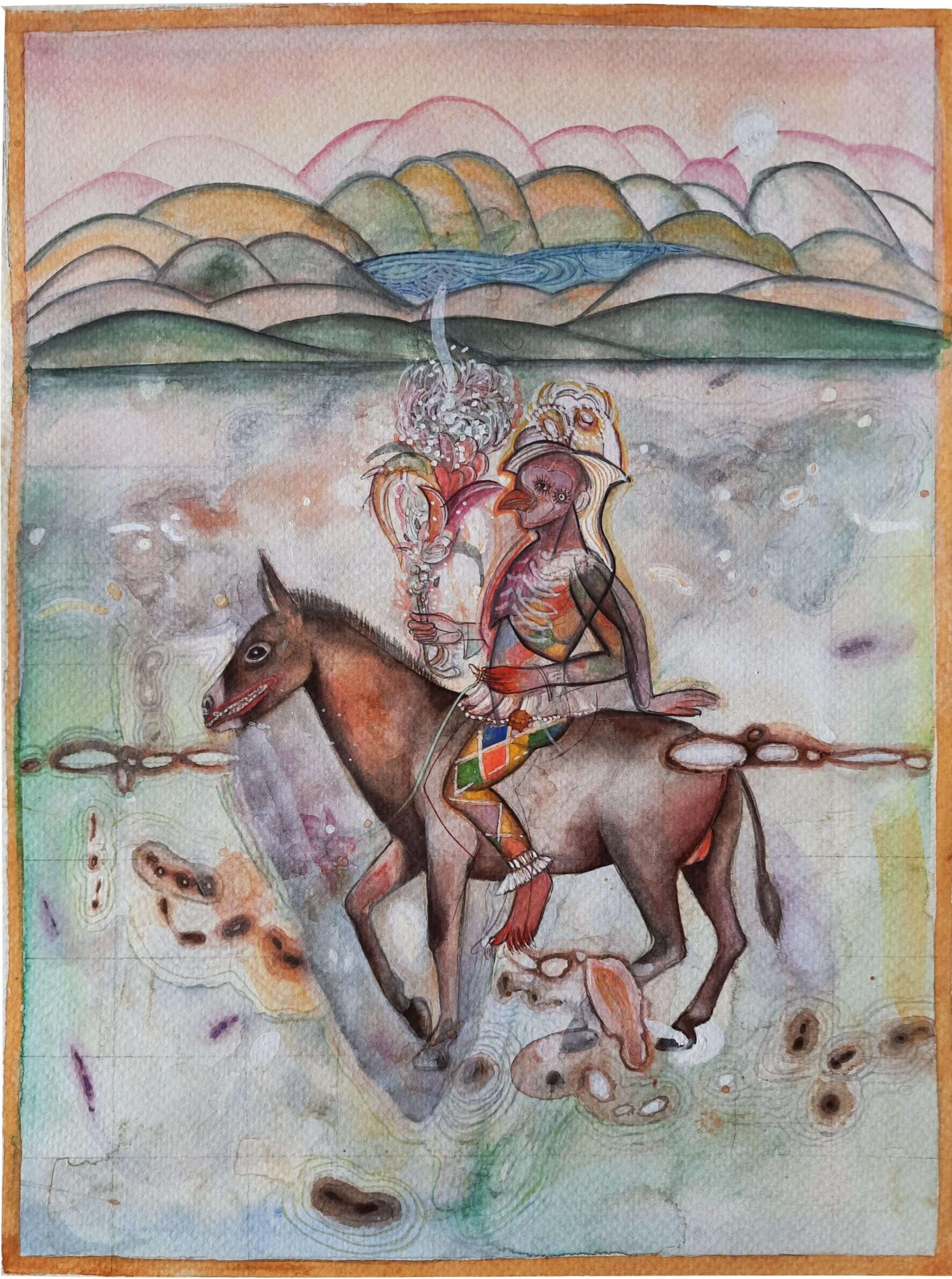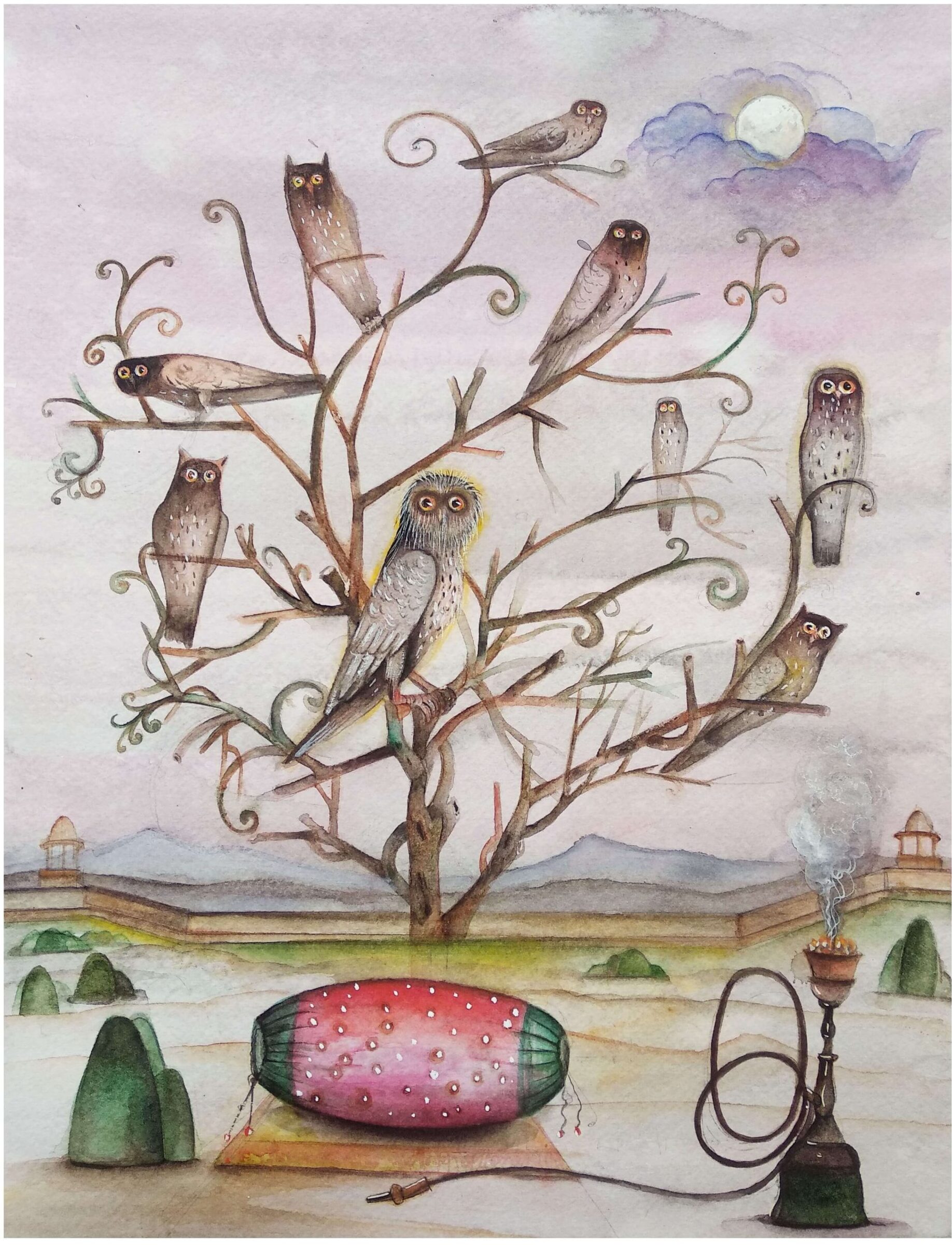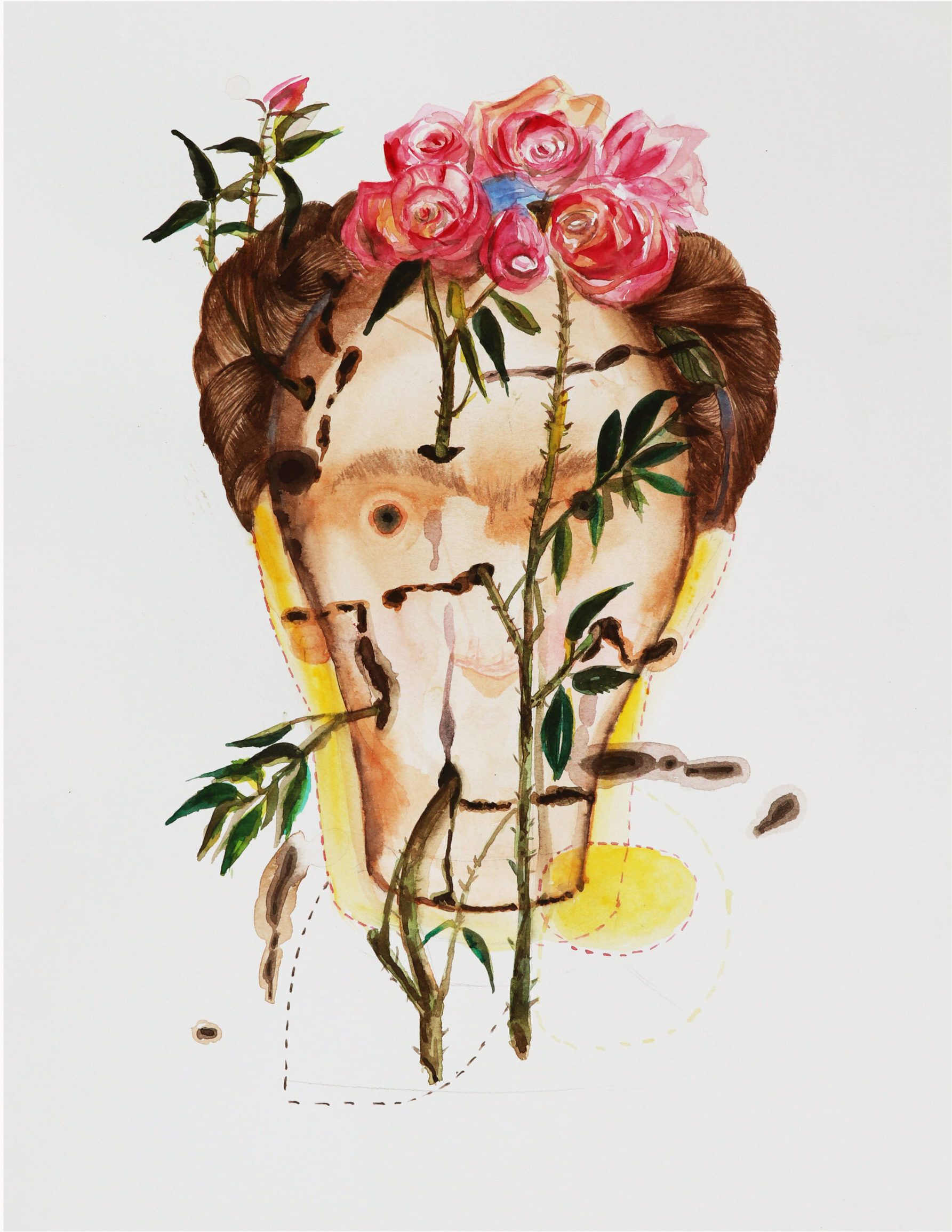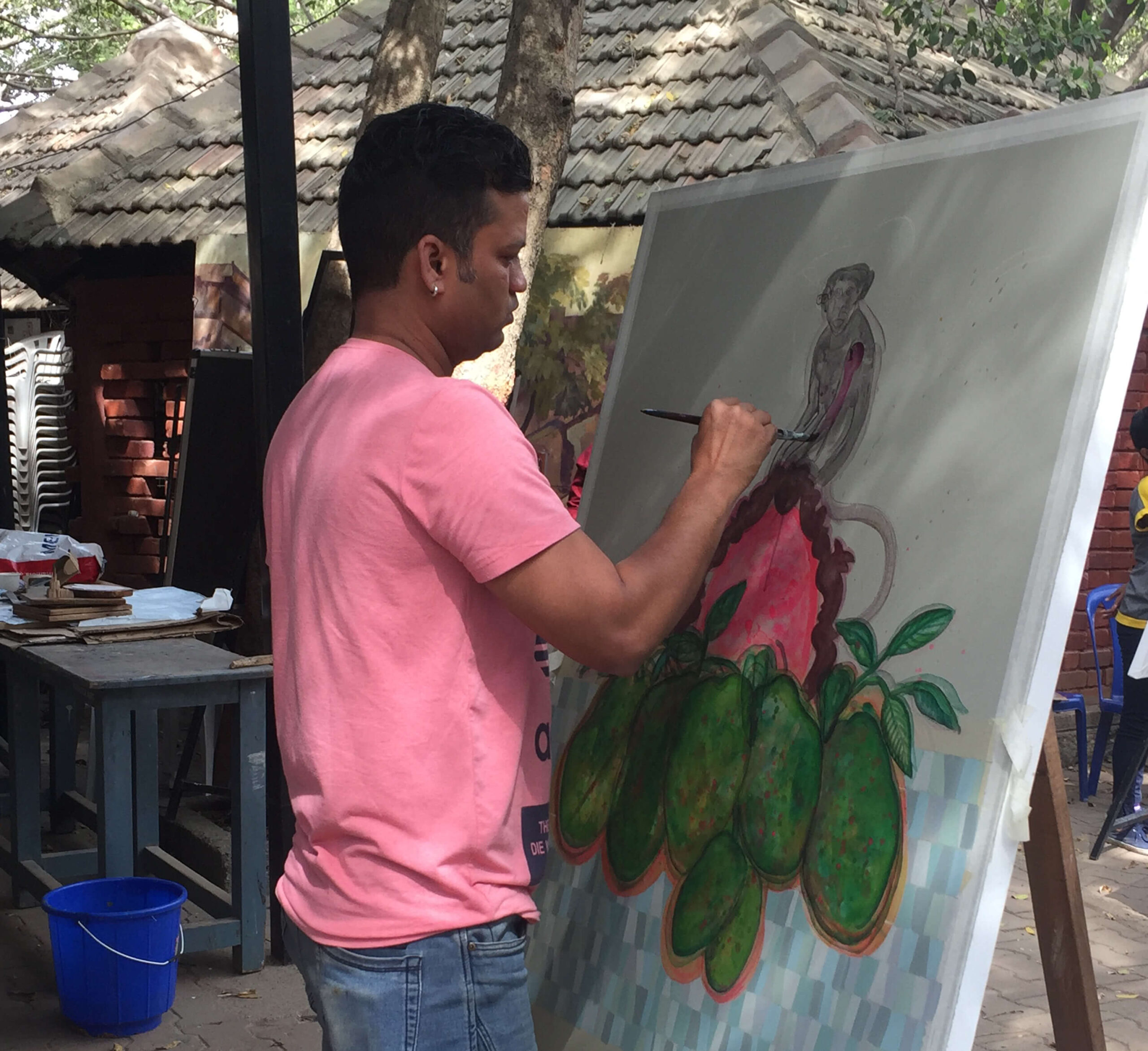Contemporary Avatars of Ancient Myths
The meta-scapes of artist Shekh Hifzul Kabeer ease gently out from the lockdown into public view
Artist Shekh Hifzul Kabeer artfully employs mythology to address the pain and anxiety of the current situation with the pandemic. A number of experts are of the opinion that sweeping societal change will make life worse for most people as greater inequality, rising authoritarianism and rampant misinformation take hold in the wake of the COVID-19 outbreak. A small portion believe and are hopeful that life will be better in a ‘tele-everything’ world where workplaces, health care and social activity improve despite the challenging times we are witnessing.
Leaning into this dichotomy of beliefs Kabeer shares with us a set of powerful imagery that is peopled with a wholesome combination mix of mythological characters, contemporary figures, folklore, fables and the daunting situation of the everyday.
Gallery
Take for instance Kabeer’s water-colour titled Novel Raktbeej: The painting embodies a demonic bat with a large sickle in its claw and a hirsute weapon of mace in the other as it floats over the map of the world in a menacing manner. According to the Hindu myth the Raktbeej was an asura or demon, (where rakta = blood, bīja = seed) who fought with Shumbha and Nishumbha against Goddess Parvati, Goddess Kali or Goddess Chamunda. Raktabīja had a boon that whenever a drop of his blood fell on the ground, a duplicate Raktabīja would be born at that spot (“he for whom each drop of blood is a seed”). According to some sources, Raktabīja was, in his previous birth, Rambha (asura), king of demons and the father of Mahishasura.
Applying this mythical character to real life, it is rather ironic that the first manifestation of the novel coronavirus was a bat that transferred it to a human being and that the medium spreading the virus is contact rather than blood. According to the myth it was only Ma Kali who collected the blood of the Raktbeej in a cup and was able to stem the outbreak of its evil power and in contemporary life it is perhaps the vaccine that can be identified as the Saviour so far.
“Working through the lockdown was the only way I could get relief from the challenges and anxiety that we were all facing during the pandemic. I worked in water-colour in a serious manner for the first time since 2002 and in a smaller format, because going to the studio was close to impossible in the middle of the Second-Wave,” recalls Kabeer. Water-colour came as a welcome relief to Kabeer, since he has been working in acrylic and large format work ever since he came into the mainstream as a painter. Now water colour is like delicate like ‘fragile glass’, or like a newly born-child that has to be treated gently. “In many ways working with water-colour was like driving on the highway without any traffic. It is a clear way without any traffic knots that may cause mood swings, which can occur when one is working with either acrylic or oil,” says Kabeer who is now able to detect the mood changes that more often than not lead to a block in work.
The pandemic has presented us with such a situation that many artists have not been able to access their studios on a daily basis. In fact, for those who live further away from their studios it has been next to impossible. This has meant to change in a manner of working for many and there has been a noticeable migration towards a miniature format, towards drawing and sketching and noticeable return to painting with water-colours. Having said that though this has not been all that successful for every artist. Many have reported a sense of depression and despondency, an inability to develop a full-fledged body of work. For a few it has meant that the extra time and lack of distractions has resulted in a though provoking body of work that is new in its approach. One could say that Kabeer has been the lucky few who has managed to turn the lockdown to his advantage and has used this time to create a body of work that is fresh in style and approach.
Another work that captures one’s attention is titled Superstitious. Here the protagonist is a zoomorphic being with multiple heads doing what is known as the ‘ostrich act’. “Very often reality comes before us and we can see it, but we tend to ignore it. Everyone is suffering but rather than going towards a solution, they’re all trapped and stuck in acts of denial,” says the artist. This is a current reality that he’s suggests with his tongue firmly in his cheek. On a subliminal level he also hints towards a fear psychosis and uncertainty that is all pervasive.
Historical characters make it easier for viewers to related to the situation and metaphorically one may associate several similarities and draw parallels between historical and current conditions. Looking at something confusing through the lens of something we already understand often clarifies and allows us to elaborate on it.
Environment is another issue that Kabeer touches upon through his body of works. It is not just the presence of the animals and birds that he employs to act as metaphors in his compositions, like the owls in Anzame Gulista, and the recurring motifs of not only the horses, donkeys and even simians but also the micro-organisms like earth worms, fish, snakes and other such organisms that are a very important part of our bio-diversity but often overlooked, even to the point of becoming extinct. This aspect of the narrative is subtle and interwoven into the larger ambit of the painting and it is only with careful observation that one may discover the sub-narrative within the metanarrative. In a work like Mutant we see the intricate design of nature and mankind super-imposed upon the world map, indicating a sense of hope despite the odds that we as a society are currently faced with.
Text: Georgina Maddox Critic Curator
ABOUT THE ARTIST
The Delhi-based artist Shekh Hifzul Kabeer was born in a village in Khairagarh, Chhattisgarh (1978). He grew up immersed in the rich folklore and traditional indigenous art of the region that nourished his visual imagination, since his childhood. Even today as he works with a global view, he is still provoked to create artworks that reflect his hometown. Shekh-Kabeer received his MFA in painting from the Indira Kala Sangeet Vishwavidyalaya ( 2002). This Chhattisgarh University known for imparting higher education in the field of Music, Dance, Fine Arts and Theatre. Shekh Kabeer is the proud recipient of a Junior Fellowship for the year 2008-09 awarded to him by the Ministry of culture, Government of India, in the year 2010-11.
Kabeer’s work explores the world of signs, symbols and mythology. What is most engaging is that he gives them a present-day twist through the medium of his artistic imagination and his experiences as a contemporary artist. His visual vocabulary reflects on the idea of the genesis and amalgamation of different cultural spheres of India and he engages with a gentle yet powerful transgression of narratives.
Shekh Kabeer, has shown his work at important exhibitions like Garhi artist studio at Rabindra Bhawan Art Gallery, The Fine Art Museum, Chandigarh (2007), at Art Pilgrim, Group Exhibition New Delhi, (2008) Group Exhibition of Orissa Modern Art Gallery, Bhubaneshwar, 2008, at the AIFACS Center in New Delhi, at the UNITED ART FAIR, New Delhi (2012), at the KALAKRITI ART GALLERY in Hyderabad (2011), Shridharani Art Gallery Triveni (2013) at Alliance Francis Art Gallery, New Delhi (2014), at Art Explore, Hauz Khas, New Delhi, (2016), at Nine Fish Art Gallery in Mumbai, (2017) .
HOW TO BUY
- Select the artwork
- Share the LOT number with us
- Request for a payment link and make payment through

- We can ship it to your address- For overseas purchases and purchases in India shipping costs will be added as per actuals.
Team Artspeaks India
WhatsApp – +91 93542 91990
To call and enquire – +91 98101 29873
You can also email us at – artspeaksindia2@gmail.com



